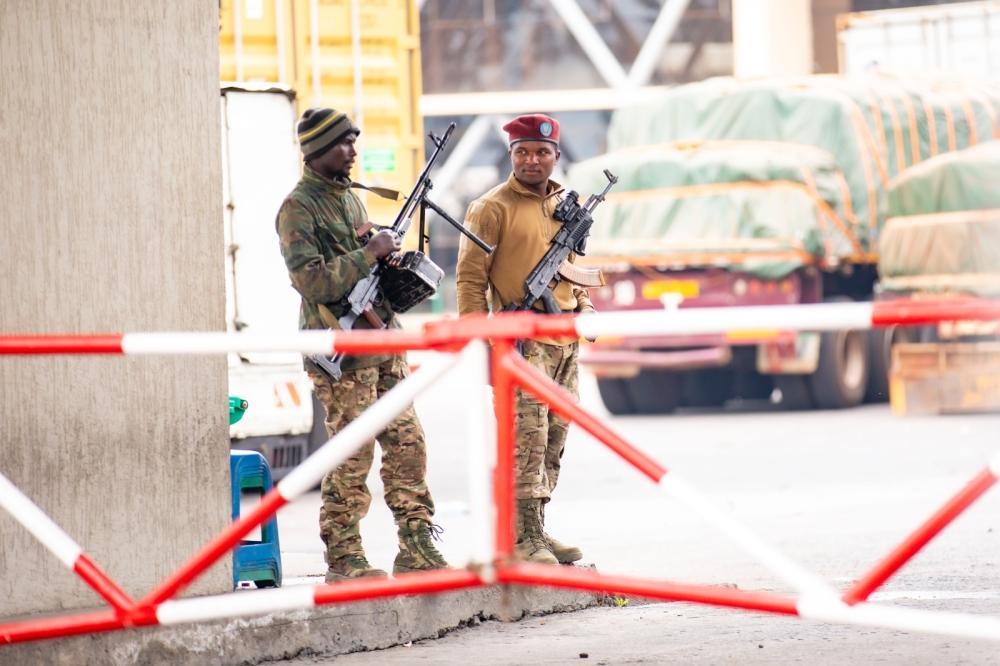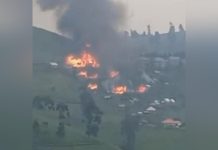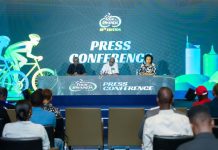Africa-Press – Rwanda. Before the M23 rebels announced they had entered Goma, the capital of North Kivu province in eastern DR Congo on the night of Sunday, January 26, the war with government forces (FARDC) had seen multiple escalations in the previous weeks.
Following the December 15 impasse in the Luanda process, in which the Congolese government refused to approve an agreement that would allow peace talks with the M23, the rebel group that is part of the Congo River Alliance (AFC) advanced towards Goma, taking control of the key city.
Following the resumption of fighting by M23 towards the end of 2021, the Kinshasa regime enlisted support of different outfits including the genocidal FDLR militia, Burundian forces, European mercenaries, South Africa-led SADC forces, and local groups called Wazalendo.
The New Times looks back the events that led to and followed the M23 rebels’ capture of a city which is home to about two million people and the hub of international military and humanitarian interventions in the conflict-ridden eastern DR Congo.
December 27
The rebels threatened to escalate the fighting on December 27 after the government coalition deployed fighter jets and helicopter gunships operating out of Goma and Kavumu airports to shell their positions, killing civilians in the vicinity.
The group’s political spokesperson Lawrence Kanyuka warned that if they fighter jets continued shelling on civilians and the rebel positions “we will have no options but to eliminate them from their source.”
The year 2024 came to an end without signs of de-escalation in the hostilities.
January 4
Following the December 27 warning against “repeated attacks” by the government coalition, on January 4, the rebel spokesperson claimed they had captured Masisi Centre, about 80 kilometres northwest of Goma.
M23’s Gen Bernard Byamungu was filmed in Masisi Trading Centre addressing locals, saying the rebels had to come to their rescue from the menaces of FARDC, FDLR, Wazalendo and Burundian forces.
Byamungu also announced that the people in Rutshuru, Lubero, Mushaki and Rubaya had been “liberated,” and so were residents of Masisi.
January 8
In a statement on January 8, Kanyuka said government forces had repeatedly violated a ceasefire negotiated in March 2023 in Luanda, Angola and “escalated” the conflict with “continuous attacks” on densely populated areas, with the integration of the FDLR, Wazalendo and other groups.
He said the government had “handed over Masisi to the genocidal FDLR group, turning it into a military base and training groups,” and “AFC/M23 was left with no choice” but to take control of the town.
January 13
On January 13, the rebels said the government had launched Operation Caterpillar 2, on January 12 in Kibumba, killing 10 civilians and injuring eight.
The rebel spokesperson at the time said they had the “right to protect and defend the civilian population,” vowing to push back against the attacks.
January 21
On January 21, the rebels claimed control of Minova, a town in Kalehe territory in South Kivu province, about 45 kilometres from Goma.
January 23
Killing of Governor Cirimwami
On January 23, the rebels released a brief statement that was posted on their spokesperson’s X account saying “The people of Goma have suffered greatly, like other Congolese.”
He said “AFC/M23 is on its way to liberate them.”
That was hours before what was until then the major escalation of the conflict.
Minutes before midnight on January 23, Kanyuka wrote on X that the Military Governor of North Kivu Peter Cirimwami had been killed in Kasengezi.
Reports said Cirimwami had travelled to the battlefield in Sake town, about 20 kilometres from Goma, to monitor operations. The Major General, who had headed the province since September 2023, was also said to be the liaison between Kinshasa and the FDLR commanders.
Various reports had pointed at Chirimwami as the major link between the Congolese government forces (FARDC), the FDLR, the militia group made up of perpetrators of the Genocide against the Tutsi in Rwanda, and the Wazalendo militia.
Following the death of Cirimwami, another blow was dealt to the government coalition: the killing of FDLR top commander Pacifique ‘Omega’ Ntawunguka.
Gen Ntawunguka was the elusive FDLR commander for several years and was said to be leading the force that was protecting Goma city.
January 24
On January 24, M23 released a statement calling on MONUSCO, the UN mission in DR Congo, to “refrain from intervening” in the war with the government forces, or else the rebel group would “exercise its full right to legitimate self-defense” against the Blue Helmets and SADC forces.
“We are advancing to liberate our compatriots in Goma,’ Kanyuka announced.
MONUSCO also said it had “conducted day and night patrols with FARDC and supported the deployment of heavy artillery and attack helicopters of [DR CONGO], destroying M23 equipment.”
January 25
On January 25, the rebel groups issued a statement, giving an ultimatum to the FARDC soldiers in Goma “to lay down their weapons within 48 hours.”
Kanyuka called on the UN force to “immediately cease its collaboration with the FARDC and genocidal forces” and instead to “refocus on its mandate to protect civilians.”
January 26
In the evening of Sunday, January 26, the M23 rebels said the airspace over Goma was closed and asked foreign forces, including Burundians, SADC troops and European mercenaries, on the Congolese territory to leave.
Reports of Congolese soldiers handing over their weapons to MONUSCO for safe keeping spread on Sunday night.
January 27: Goma falls
In the early hours of Monday, January 27, Kanyuka said “the liberation” of Goma city was “successfully completed and the situation is under control.”
The rebel spokesperson called for calm. Dozens of FARDC soldier fled to Rwanda for refuge after they were overpowered by the M23.
But reports of gunfire exchanges in Goma started circulating on Monday morning as some pockets of the city were still occupied by FARDC soldiers.
The situation escalated in the hours closer to midday, as the DR Congo army and its allies, the FDLR, shelled on Rwandan territory, killing civilians and injuring dozens in Rubavu town.
January 28
On Tuesday, January 28, sporadic gunfire still rang out in Goma as the rebels sought to take control of the whole of Goma.
M23 military spokesperson Lt Col Willy Ngoma said Goma airport was “completely secured” as fighting had subsided.
Ngoma was also filmed in the centre of Goma city, talking to locals.
January 29
On Wednesday, January 29, no sporadic gunfire could be heard around Goma and M23 fighters were seen manning the Congolese side of the Rwanda-DR Congo border.
Close to 300 European mercenaries also surrendered to the rebels and were allowed to cross into Rwanda before they were facilitated to take flights to their countries.
For More News And Analysis About Rwanda Follow Africa-Press






